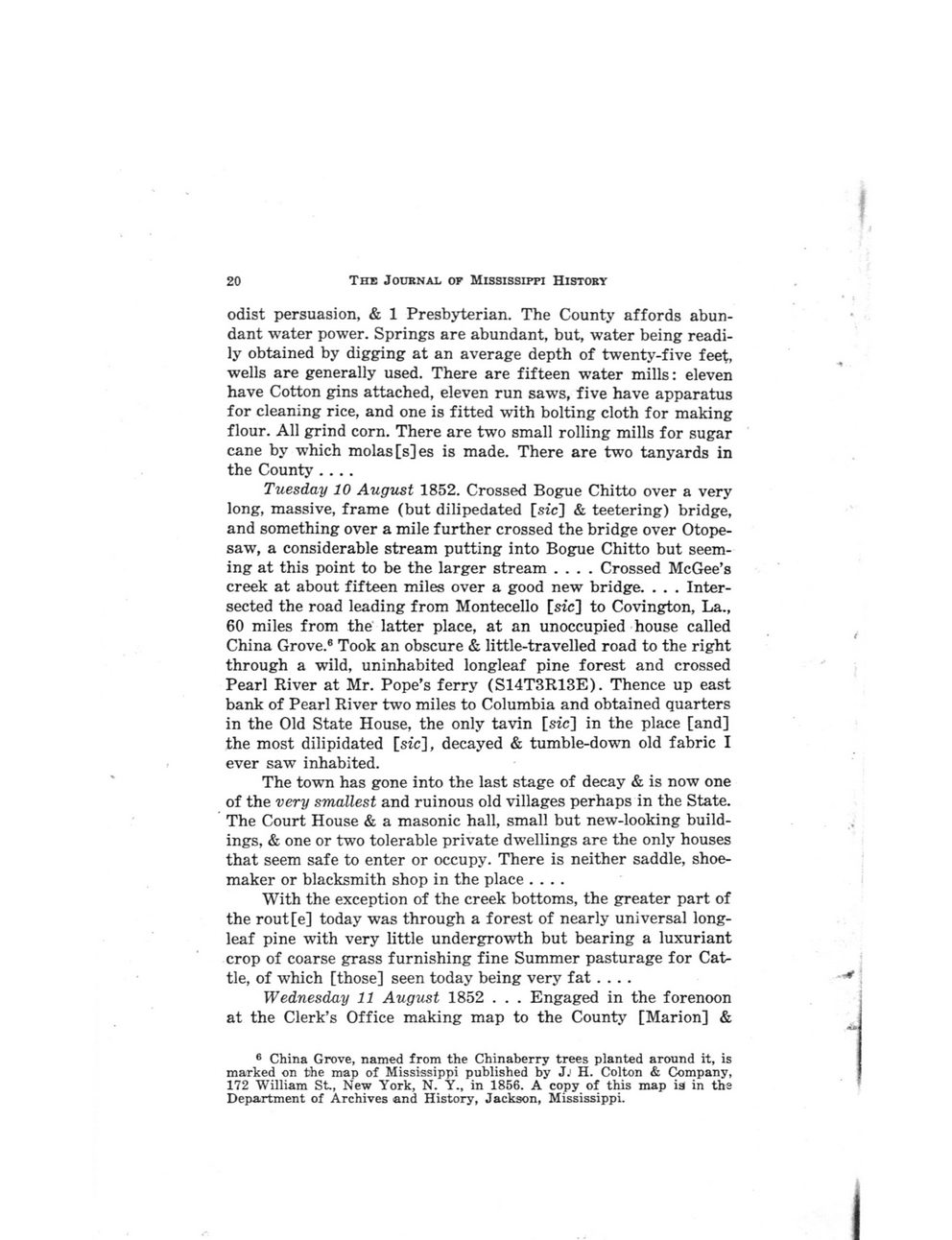This text was obtained via automated optical character recognition.
It has not been edited and may therefore contain several errors.
20 The Journal of Mississippi History odist persuasion, & 1 Presbyterian. The County affords abundant water power. Springs are abundant, but, water being readily obtained by digging at an average depth of twenty-five feet, wells are generally used. There are fifteen water mills: eleven have Cotton gins attached, eleven run saws, five have apparatus for cleaning rice, and one is fitted with bolting cloth for making flour. All grind corn. There are two small rolling mills for sugar cane by which molas[s]es is made. There are two tanyards in the County .... Tuesday 10 August 1852. Crossed Bogue Chitto over a very long, massive, frame (but dilipedated [sic] & teetering) bridge, and something over a mile further crossed the bridge over Otope-saw, a considerable stream putting into Bogue Chitto but seeming at this point to be the larger stream .... Crossed McGee?s creek at about fifteen miles over a good new bridge. . . . Intersected the road leading from Montecello [sic] to Covington, La., 60 miles from the latter place, at an unoccupied house called China Grove.6 Took an obscure & little-travelled road to the right through a wild, uninhabited longleaf pine forest and crossed Pearl River at Mr. Pope?s ferry (S14T3R13E). Thence up east bank of Pearl River two miles to Columbia and obtained quarters in the Old State House, the only tavin [sic] in the place [and] the most dilipidated [sic], decayed & tumble-down old fabric I ever saw inhabited. The town has gone into the last stage of decay & is now one of the very smallest and ruinous old villages perhaps in the State. The Court House & a masonic hall, small but new-looking buildings, & one or two tolerable private dwellings are the only houses that seem safe to enter or occupy. There is neither saddle, shoemaker or blacksmith shop in the place .... With the exception of the creek bottoms, the greater part of the rout[e] today was through a forest of nearly universal longleaf pine with very little undergrowth but bearing a luxuriant crop of coarse grass furnishing fine Summer pasturage for Cattle, of which [those] seen today being very fat .... Wednesday 11 August 1852 . . . Engaged in the forenoon at the Clerk?s Office making map to the County [Marion] & 6 China Grove, named from the Chinaberry trees planted around it, is marked on the map of Mississippi published by J.1 H. Colton & Company, 172 William St., New York, N. Y., in 1856. A copy of this map is in ths Department of Archives and History, Jackson, Mississippi.

Claiborne, J.F.H Claiborne-J.F.H-060